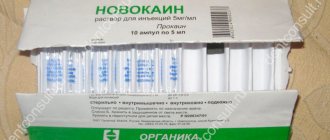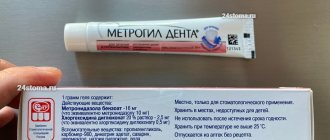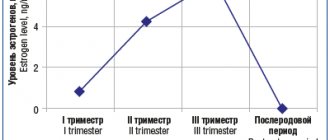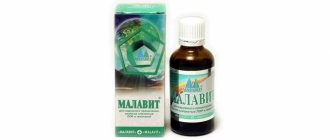Release form
- Ketorolac tablets are white-coated, biconvex. 10 such tablets in contour packaging; 1,2, 5 or 10 packs in a paper pack. 10 such tablets in a polymer jar; one such jar in a pack of paper. 25 of these tablets in contour packaging; 2 or 4 packs in a paper pack.
- Ketorolac (i.v., i.m.) in ampoules contains a transparent solution of white-yellow color. 1 or 2 ml of this solution in an ampoule; 5 ampoules in contour packaging, 1 or 2 such packages in a cardboard box. 1 or 2 ml of this solution in an ampoule; 10 such ampoules in a cardboard box.
Pharmacodynamics and pharmacokinetics
Pharmacodynamics
It has a strong analgesic effect, moderate antipyretic and anti-inflammatory effect.
They are associated with indiscriminate inhibition of the enzyme cyclooxygenase of the first and second types in peripheral tissues, resulting in inhibition of the synthesis of prostaglandins - mediators of pain, inflammation and thermoregulation.
The drug has no effect on opioid receptors, does not cause addiction, does not depress breathing, and does not have a sedative or anxiolytic effect.
The strength of the analgesic effect is comparable to morphine and superior to other drugs in its group.
After oral administration, the analgesic effect is recorded after one hour, the greatest effect – after one to two hours. After an intramuscular injection, the onset of the analgesic effect is recorded after 30 minutes, the greatest effect – after one to two hours.
Pharmacokinetics
When taken internally and when administered by injection, it is actively absorbed from the intestines and tissues. The maximum concentration in the blood is recorded after 40-50 minutes, both after oral administration and after intramuscular injection. Eating does not affect absorption. Plasma protein binding is about 99%.
The half-life is approximately 6 hours. 90% of the dose is excreted by the kidneys, in its original form - 60%; the remaining amount is excreted through the digestive tract.
Use of ketorolac for injury and back pain
Ketorolac can be considered a drug of choice for the relief of intense pain, especially in case of injury, however, its short-term use is also possible during exacerbation of chronic pain in patients with degenerative diseases of the spine, rheumatoid arthritis, osteoarthritis, etc. According to a double-blind prospective study, among patients with severe back pain, the effectiveness of ketorolac was comparable to the effects of meperedine, and the sedation and side effects were less pronounced [15]. A multicenter clinical trial evaluated the analgesic effects of ketorolac for back pain and found it to be comparable to those of codeine with significantly fewer adverse events [16].
A clinical trial of 148 patients hospitalized for closed limb injuries received intravenous ketorolac (30 mg) or morphine (15 mg). With complete immobility of the affected limb, ketorolac and morphine had a similar analgesic effect, and with small movements of the affected limb associated with the manipulations, the effectiveness of ketorolac was even higher. The incidence of side effects when using ketorolac was 16 times lower than when using morphine, which more often caused nausea, vomiting, and phlebitis. The authors concluded that patients receiving ketorolac required less attention from nursing and physician staff [17].
Indications for use
Moderate to severe pain syndrome :
- toothache;
- pain of traumatic etiology;
- pain in the postoperative and postpartum period;
- pain due to cancer ;
- dislocations , sprains ;
- arthralgia , neuralgia , myalgia , radiculitis ;
- rheumatic diseases.
Used for symptomatic therapy, relief of inflammation and pain at the time of use, does not affect the development of the disease.
Contraindications
- Combination (complete or incomplete) of bronchial asthma , intolerance to aspirin (or other drugs in this group) and recurrent polyposis of the paranasal sinuses and nose .
- Hypersensitivity.
- Hypovolemia.
- Intolerance pyrazolone drugs .
- Exacerbation of erosive and ulcerative diseases of the gastrointestinal tract.
- Hypocoagulation , high risk of bleeding.
- Severe kidney or liver damage , liver disease.
- Condition after coronary artery bypass surgery .
- Hyperkalemia.
- 3rd trimester of pregnancy, childbirth and lactation.
- Inflammatory intestinal lesions.
- Age less than 16 years.
Use with caution for: bronchial asthma , alcoholism , chronic heart failure, cholecystitis , postoperative period, arterial hypertension , edema syndrome, kidney damage, active hepatitis, cholestasis, systemic lupus erythematosus, sepsis, coronary heart disease, dyslipidemia , cerebrovascular diseases, peripheral damage arteries, diabetes mellitus, ulcerative lesions of the digestive tract in the past, H. pylori infection, prolonged use of other non-steroidal anti-inflammatory drugs , old age, 1st and 2nd trimesters of pregnancy.
Ketorolac in the relief of renal colic
Ketorolac is widely used for the successful relief of renal colic. This is due to the fact that this drug, by blocking the synthesis of prostaglandins in the kidney, reduces urinary tract motility and spasm, reducing pressure in the urinary tract, as well as reducing renal blood flow [18]. It has been shown that intravenous administration of 30 mg of ketorolac for renal colic gives the same analgesic effect as intravenous administration of 2.5 g of metamizole in combination with antispasmodics with fewer side effects [19]. According to a double-blind randomized study that included 57 patients with renal colic, the analgesic activity of ketorolac (30 mg intramuscularly) and diclofenac (75 mg intramuscular) was comparable in severity and duration [20]. Similar data were obtained in another double-blind controlled study [21]. In a study involving 48 patients with renal colic, intramuscular administration of 30 mg ketorolac was more effective than subcutaneous administration of tramadol at a dose of 1 mg/kg body weight [22].
According to a multicenter, double-blind, randomized trial that included patients 18–65 years of age with moderate to severe renal colic, ketorolac was as effective as meperedine for pain relief, but caused less functional impairment. To relieve pain, patients were initially treated with meperidine at a dose of 50 mg intravenously, then 25–50 mg every 15 minutes for complete pain relief. Another group of patients first received ketorolac (30 mg intravenously) or placebo, and then the injections were repeated every 15 minutes as needed. Overall, 64% of patients receiving meperidine and 72% of patients receiving ketorolac achieved successful pain relief at 60 minutes; 10% of patients after using meperidine and 44% of patients after ketorolac were able to resume normal activity within an hour [23].
Side effects
- Reactions from the circulatory system: changes in pressure, bradycardia , rapid heartbeat , fainting.
- Reactions from the digestive system: abdominal pain, diarrhea, flatulence, nausea, constipation , vomiting, thirst , gastritis, stomatitis , erosive and ulcerative changes in the digestive tract, liver damage.
- Reactions from the nervous system: paresthesia , anxiety, sleep disturbances , drowsiness , depression , visual disturbances, dizziness , movement disorders.
- Reactions from the respiratory system: attacks of suffocation.
- Reactions from the genitourinary system: oliguria , increased urination, polyuria, proteinuria, hematuria, azotemia, acute renal failure .
- Reactions from the hematopoietic system: nosebleeds, anemia , eosinophilia, thrombocytopenia.
- Metabolic reactions: edema , hypokalemia , increased creatinine or urea in the blood, hyponatremia.
- Allergic reactions: hemorrhagic rash, Stevens-Johnson syndrome , urticaria , Quincke's edema , Lyell's syndrome , anaphylactic shock, bronchospasm, myalgia .
- Other reactions: fever .
- Local reactions: pain in the injection area.
Ketorolac-LF solution for IM administration 30 mg/ml in 1 ml ampoules No. 5x2
Name
Ketorolac-LF.
Release form
Solution for intramuscular administration.
Dosage
1 ampoule of 1 ml, in a package of 10 pcs.
Description
Transparent light yellow liquid.
Compound
One ampoule contains: Active substance: ketorolac tromethamine – 30.0 mg. Excipients: ethanol, sodium chloride, disodium edetate, 1M sodium hydroxide solution or 1M hydrochloric acid solution, water for injection.
Pharmacotherapeutic group
Nonsteroidal anti-inflammatory and antirheumatic drugs. ATX code. M01AB15.
Pharmacodynamics
Non-steroidal anti-inflammatory drug. It has a pronounced analgesic effect, and also has anti-inflammatory and moderate antipyretic effects. The mechanism of action is associated with selective inhibition of the activity of the enzyme cyclooxygenase (COX-1 and COX-2), mainly in peripheral tissues, resulting in inhibition of prostaglandin biosynthesis. Does not affect opioid receptors, does not depress respiration, does not cause drug dependence, and does not have a sedative or anxiolytic effect. The strength of the analgesic effect is comparable to morphine, significantly superior to other NSAIDs. Ketorolac inhibits platelet aggregation and increases bleeding time. The functional state of platelets is restored 24-48 hours after discontinuation of the drug.
Pharmacokinetics
The bioavailability of ketorolac after intramuscular administration ranges from 80% to 100%. The pharmacokinetics of ketorolac under conditions of mid-therapeutic parenteral doses is a linear function. The equilibrium concentration of the drug in plasma is 50% higher than that determined after a single administration. More than 99% of the drug is bound to plasma proteins, resulting in an apparent volume of distribution of less than 0.3 l/kg. More than 50% of the administered dose is metabolized in the liver with the formation of pharmacologically inactive metabolites. The main metabolites are glucuronides and p-hydroxyketorolac. Ketorolac passes into breast milk. Excreted by the kidneys (91%) and through the intestines (6%). Glucuronides are excreted in the urine. The half-life in patients with normal renal function averages 5 hours. The total clearance is 0.025 l/kg/h. In patients with renal failure, the volume of distribution of ketorolac may increase by 2 times, and the volume of distribution of the R-enantiomer by 20%. The half-life is prolonged in elderly patients and shortened in younger patients. Liver function does not affect the half-life. In patients with impaired renal function with a plasma creatinine concentration of 19-50 mg/l (168-442 µmol/l), the half-life is 10.3-10.8 hours, with more severe renal failure - more than 13.6 hours. The total clearance in patients with renal failure at a plasma creatinine concentration of 0.016 l/kg/h. Ketorolac is not eliminated by hemodialysis.
Indications for use
Short-term relief of moderate and severe acute pain in the postoperative period. Treatment should be started only in a hospital setting, the maximum duration of treatment is 2 days.
Directions for use and dosage
Ketorolac-LF is intended for intramuscular administration; the drug should not be used for epidural or spinal administration. The solution is injected intramuscularly slowly deep into the muscle. The onset of the analgesic effect is about 30 minutes, the maximum severity is within 1-2 hours, the average duration of analgesia is 4-6 hours. Administration of the drug several times a day for more than 2 days is not recommended, since in most cases patients do not require longer-term analgesic therapy or can be transferred to oral administration of Ketorolac-LF. In this case, the duration of use of Ketorolac-LF parenterally and orally should not exceed 5 days in total. To achieve maximum analgesic effect in the early postoperative period, it is possible to use Ketorolac-LF and narcotic analgesics together; the daily dose of the latter in this case is reduced. Ketorolac-LF does not affect addiction to opioids and does not increase associated respiratory depression or sedation. Dose selection and adjustment should be made in accordance with the intensity of pain and response to the drug. To minimize side effects, it is recommended to use the minimum effective dose for the shortest possible course of treatment. Adults: The usually recommended initial dose of Ketorolac-LF is 10 mg, followed by 10-30 mg every 4-6 hours. In the early postoperative period, it is permissible to administer the drug every 2 hours, if necessary. The maximum daily dose is 90 mg/day, in patients weighing less than 50 kg – no more than 60 mg/day. Elderly patients (over 65 years of age): it is recommended to use the drug in the lowest effective dose, the total dose should not exceed 60 mg/day. Due to the higher risk of side effects in this group of patients, the minimum possible duration of treatment and regular monitoring of the patient’s condition to exclude gastrointestinal bleeding are recommended. Children: The safety and effectiveness of ketorolac in children have not been confirmed. Ketorolac-LF is not recommended for use in children under 16 years of age. Patients with renal impairment: The use of ketorolac is contraindicated in patients with severe to moderate renal impairment. In case of mild renal dysfunction, it is permissible to use Ketorolac-LF at a dose of no more than 60 mg/day. If combined parenteral and oral administration is necessary, the total daily dose of Ketorolac-LF should not exceed 90 mg (60 mg in patients over 65 years of age, patients weighing less than 50 kg or impaired renal function), while the dose of the drug taken orally should not exceed 40 mg/day. It is recommended to quickly transfer the patient only to the oral form of the drug.
Side effect
From the gastrointestinal tract: anorexia, feeling of discomfort in the abdomen, feeling of fullness of the stomach, nausea, dyspepsia, gastrointestinal pain, epigastric pain, diarrhea, flatulence, belching, vomiting, constipation, erosive and ulcerative changes, bleeding and gastrointestinal perforation -intestinal tract (sometimes fatal), vomiting blood, blood in the stool, gastritis, peptic ulcer, pancreatitis, ulcerative stomatitis, esophagitis, exacerbation of Crohn's disease and colitis. From the liver and biliary tract: impaired liver function, liver failure, jaundice, hepatitis, hepatomegaly, increased activity of liver transaminases. From the nervous system: headache, dizziness, fainting, increased fatigue, weakness, irritability, dry mouth, increased thirst, mood changes, anxiety, impaired concentration, euphoria, nervousness, confusion, paresthesia, unusual dreams, depression, drowsiness, sleep disturbance, insomnia, hallucinations, agitation, hyperkinesia, convulsions, pathological thoughts, aseptic meningitis, stiff neck, anxiety, vertigo, disorientation, thought disorder. From the senses: impaired taste, blurred visual perception, optic neuritis, tinnitus, decreased and loss of hearing. From the musculoskeletal system: myalgia. From the urinary system: pain at the site of the kidney projection, dysuria, frequent urination, oliguria, hematuria, proteinuria, increased levels of urea and creatinine in the blood serum, hyponatremia, hyperkalemia, urinary retention, renal failure, interstitial nephritis, papillary necrosis, nephrotic syndrome, hemolytic uremic syndrome. From the cardiovascular system: pallor, hyperemia, chest pain, palpitations, bradycardia, heart failure, arterial hypertension, edema. Data from clinical and epidemiological studies suggest that the use of some NSAIDs, especially in high doses and for long periods of time, may be associated with an increased risk of arterial thromboembolic complications (myocardial infarction or stroke). From the blood side: purpura, leukopenia, eosinophilia, neutropenia, agranulocytosis, aplastic anemia, hemolytic anemia, thrombocytopenia, a possible decrease in the rate of blood clotting, the occurrence of hemorrhages under the skin, hematomas, nosebleeds, increased bleeding time, increased bleeding of postoperative wounds. From the respiratory system: – shortness of breath, tachypnea, bronchospasm, complication of asthma, pulmonary edema. From the reproductive system: infertility (in women). Skin: itching, urticaria, photosensitivity, Lyell's syndrome, exfoliative dermatitis, toxic epidermal necrolysis, erythema multiforme, Stevens-Johnson syndrome, skin rashes, including maculopapular and weeping, changes in facial skin color. Allergic reactions: anaphylactic and anaphylactoid reactions, urticaria, bronchospasm, laryngeal edema, angioedema, eyelid edema, periorbital edema, exfoliative dermatitis, bullous dermatosis. From the body as a whole: general malaise, swelling, fever, increased sweating, weight gain, pain, swelling and hyperemia at the injection site. To prevent possible side effects, one should strive to use the minimum effective doses of the drug, strictly adhere to the established dosages and administration regimens, take into account the patient’s condition (age, concomitant diseases, liver and kidney function, the state of water-electrolyte metabolism and the hemostatic system), as well as possible drug interactions with combination therapy.
Contraindications
Bronchial asthma. Complete or partial syndrome of nasal polyps, bronchospasm, angioedema in history; Peptic ulcer of the stomach and duodenum during the period of exacerbation, as well as a history of ulcers or gastrointestinal bleeding, the presence or suspicion of gastrointestinal bleeding; History of blood coagulation disorders, conditions with a high risk of bleeding, hemorrhagic diathesis, coagulopathies, hemorrhagic stroke, intracranial bleeding, simultaneous use with anticoagulants (including warfarin, low doses of heparin). Surgical interventions with a high risk of bleeding or the risk of incomplete stopping of bleeding; Moderate and severe renal failure (plasma creatinine more than 50 mg/l), risk of renal failure, hypovolemia, dehydration; Pregnancy, childbirth and breastfeeding; Hypersensitivity to ketorolac, aspirin, other NSAIDs or any component of the drug; Concomitant use of other NSAIDs (risk of additive side effects); Age up to 16 years; Congestive heart failure; The drug is not used for pain relief before and during surgery; The drug is not used for epidural and intrathecal administrations; Severe liver failure; Combined use with lithium preparations, pentoxifylline, probenecid.
Overdose
An overdose of ketorolac with a single or repeated use is usually manifested by pain in the abdomen, the occurrence of peptic ulcers of the stomach or erosive gastritis, impaired renal function, hyperventilation, metabolic acidosis, these symptoms are cured after stopping the drug. In these cases, gastric lavage, administration of adsorbents (activated carbon) and symptomatic therapy are recommended. Ketorolac is not sufficiently eliminated by dialysis.
Precautionary measures
Features of application. Ketorolac-LF is prescribed with caution to patients with impaired liver function. While taking Ketorolac-LF, it is possible to increase the level of liver enzymes. If there are functional abnormalities in the liver while taking ketorolac, a more severe pathology may develop. If signs of liver pathology are detected, treatment should be stopped. In patients with renal failure or a history of kidney disease, Ketorolac-LF is prescribed with caution. Elderly patients: since patients in this age group are more likely to develop adverse reactions, the minimum effective dose should be used (daily therapeutic dose not exceeding 60 mg for patients over 65 years of age). Children: there is insufficient data on the safety and effectiveness of Ketorolac-LF in children; therefore, the drug is not recommended for use in children under 16 years of age. Impact on laboratory test parameters: bleeding time may increase when studying coagulation parameters. Ketorolac can cause severe adverse reactions from the digestive tract at any stage of drug therapy after or without warning symptoms; such adverse reactions can be fatal. The risk of serious gastrointestinal bleeding is dose-related, but side effects can occur even with short-term therapy. In addition to a history of peptic ulcer disease, provoking factors are the simultaneous use of oral corticosteroids, anticoagulants, long-term therapy with non-steroidal anti-inflammatory drugs, smoking, drinking alcoholic beverages, and old age. If you suspect the development of adverse reactions from the gastrointestinal tract, ketorolac should be discontinued. NSAIDs should be used with caution in patients with a history of Crohn's disease and ulcerative colitis due to the possibility of worsening the course of the disease. Ketorolac inhibits platelet aggregation and prolongs bleeding time; platelet function returns to normal within 24-48 hours after discontinuation of the drug. In patients receiving anticoagulant therapy, the use of ketorolac may increase the risk of bleeding. Patients already taking anticoagulants or patients who require low-dose heparin should not receive ketorolac. In patients taking other drugs that affect hemostasis, ketorolac should be used with caution. In patients who have undergone surgery with a high risk of bleeding or incomplete hemostasis, ketorolac should not be used. Like other NSAIDs, ketorolac inhibits prostaglandin synthesis and may have toxic effects on the kidneys, so it should be used with caution in patients with impaired renal function or a history of kidney disease. Risk groups include patients with impaired renal function, hypovolemia, heart failure, liver dysfunction, patients using diuretics, and elderly patients. Fluid retention, sodium chloride retention, hypertension, oliguria and peripheral edema have been observed in some patients taking NSAIDs, including ketorolac, so it should be used with caution in patients with hypertension or heart failure. Before administering the drug, disturbances in water and electrolyte balance should be corrected. Clinical studies and epidemiological data suggest that the use of some NSAIDs, especially in high doses and for long periods of time, may be associated with an increased risk of arterial thrombotic complications such as myocardial infarction or stroke. Such a risk cannot be excluded for ketorolac. To minimize the potential risk of adverse cardiovascular complications in patients using NSAIDs, the minimum effective dose should be used for the shortest possible period of time. Ketorolac should be prescribed to patients with uncontrolled hypertension, congestive heart failure, established coronary artery disease, peripheral arterial and/or cerebrovascular disease only after a thorough assessment of all the advantages and disadvantages of such treatment. Ketorolac should be administered with caution to patients with impaired liver function or a history of liver disease. Significant increases (more than three times normal) in serum ALT and AST were observed in less than 1% of patients in controlled clinical studies. In addition, isolated cases of severe hepatic reactions have been reported, including jaundice, fulminant hepatitis, liver necrosis and liver failure, in some cases leading to death. If signs of liver dysfunction appear, ketorolac should be discontinued. Use of the drug in patients with systemic lupus erythematosus or connective tissue diseases may be associated with an increased risk of developing aseptic meningitis. There have been reports of serious skin reactions such as exfoliative dermatitis, Stevens-Johnson syndrome and toxic epidermal necrolysis. The highest risk of developing these reactions exists at the beginning of treatment. Serious anaphylactic and anaphylactoid reactions, such as bronchospasm, laryngeal edema, angioedema, and anaphylactic shock, have been reported. Ketorolac should not be used in patients with a history of bronchial asthma, nasal polyp syndrome, bronchospasm, or angioedema. If a rash or other manifestations of hypersensitivity appear, treatment with the drug should be discontinued. The drug Ketorolac-LF contains a small amount of ethanol (100 mg per 1 ml).
Interaction with other drugs
Ketorolac slightly reduces the degree of protein binding of warfarin. In vitro studies have shown the effect of therapeutic doses of salicylates on the degree of binding of ketorolac to plasma proteins downward from 99.2% to 97.5%. When combined with furosemide, its diuretic effect may be weakened by approximately 20%. Probenecid reduces the plasma clearance and volume of distribution of ketorolac, increasing its plasma concentration and increasing its half-life. With the use of ketorolac, the clearance of methotrexate and lithium may decrease and the toxicity of these substances may increase. A possible interaction between ketorolac and non-depolarizing muscle relaxants has been noted, leading to the development of apnea. It is possible that simultaneous use with ACE inhibitors may increase the risk of renal dysfunction. Rare cases of the development of convulsive attacks have been described when ketorolac is combined with anticonvulsants (phenytoin, carbamazepine). Hallucinations may occur during simultaneous use of ketorolac and psychostimulant drugs (fluoxetine, thiothixene, alprazolam). Concomitant use of ketorolac and NSAIDs, including selective COX-2 inhibitors, should be avoided due to an increased risk of serious adverse events. Ketorolac inhibits platelet aggregation, reduces thromboxane concentrations and prolongs bleeding time. Platelet function returns to normal within 24-28 hours after stopping ketorolac. Concomitant use of ketorolac and therapeutic doses of warfarin, prophylactic doses of heparin (2500-5000 units over 12 hours) and dextrans may be associated with an increased risk of bleeding. NSAIDs should not be used for 8 to 12 days after mifepristone administration due to the potential for decreased efficacy of mifepristone. Concomitant use of ketorolac and pentoxifylline increases the risk of bleeding. Caution should be used when coadministered with corticosteroids due to the increased risk of gastrointestinal ulceration or bleeding. Ketorolac reduces the need for opioid analgesics when used to relieve postoperative pain. Ketorolac may increase the risk of seizures in patients taking quinolines concomitantly. Concomitant use of NSAIDs and zidovudine increases the risk of hematological toxicity. When ketorolac is used concomitantly with tacrolimus or cyclosporine, the risk of nephrotoxicity increases. NSAIDs may worsen heart failure, reduce glomerular filtration rate, and increase plasma levels of cardiac glycosides when used together. Incompatibility. Ketorolac-LF, solution for intramuscular administration, should not be mixed in small containers (for example, in one syringe) with morphine sulfate, meperidine hydrochloride, promethazine hydrochloride or hydroxyzine hydrochloride, since ketorolac may precipitate. Ketorolac-LF is pharmaceutically incompatible with tramadol and lithium preparations.
Use during pregnancy and lactation
The safety and effectiveness of using the drug Ketorolac-LF during pregnancy has not been established. Drugs that affect the synthesis of prostanlandins, including ketorolac, can cause a decrease in fertility, and therefore are not recommended for use by women planning pregnancy. The safety of the drug in pregnant women has not been studied. A study on rats and rabbits at toxic doses did not reveal a teratogenic effect. In rats, prolongation of gestational age and delayed birth were noted. Due to the known negative effect of NSAID drugs on the cardiovascular system of the fetus (risk of occlusion of the ductus arteriosus), ketorolac is contraindicated in pregnant women. The use of ketorolac during labor is not recommended due to the increased risk of bleeding in mother and child. Ketorolac passes into milk; therefore, it is not recommended to take Ketorolac-LF during breastfeeding.
Impact on the ability to drive vehicles and operate machinery
Since a significant proportion of patients who are prescribed ketorolac develop side effects from the central nervous system (drowsiness, dizziness, headache), it is recommended to avoid performing work that requires increased attention and quick reaction.
Storage conditions
Store in a place protected from light at a temperature not exceeding 25 ºС. Keep out of the reach of children.
Best before date
3 years. Do not use after the expiration date stated on the packaging.
Package
1 ml of solution for intramuscular administration in dark glass ampoules with a break ring. 5 ampoules in a cell package. 1 or 2 blisters along with instructions for medical use in a cardboard box
Buy Ketorolac-LF solution for intramuscular administration 30 mg/ml in 1 ml ampoules No. 5x2 in the pharmacy
Price for Ketorolac-LF solution for intramuscular administration 30 mg/ml in 1 ml ampoules No. 5x2
Instructions for use for Ketorolac-LF solution for intramuscular administration 30 mg/ml in 1 ml ampoules No. 5x2
Instructions for use of Ketorolac (Method and dosage)
Ketorolac tablets instructions for use recommend using them orally. Single dose - 10 mg. The next time you use it, you can take 10 mg up to four times a day; the highest daily dose should not be more than 40 mg. The duration of treatment is up to 5 days.
Ketorolac injections instructions for use recommend that when administered intramuscularly, stick to a single dose of up to 30 mg once every 4-6 hours. The highest dose is 90 mg (three ampoules) per day. The longest duration of use of the drug is up to 2 days.
Use of ketorolac among postoperative patients
When considering pain management in postoperative patients, ketorolac was in some cases more effective than morphine and meperedine [9], and side effects such as nausea and vomiting were less common with its use. When compared with other NSAIDs, ketorolac demonstrated a more pronounced analgesic effect for postoperative patients. Thus, according to one study, the use of ketorolac (30 mg intravenously) in postoperative patients reduced the need for additional prescription of narcotic analgesics more than the use of diclofenac or ketoprofen [10]. According to another study, a single injection of 30 mg of ketorolac or 75 mg of diclofenac did not provide sufficient analgesia in women undergoing laparoscopic sterilization, but in 60% of cases, repeated injection of the analgesic reduced pain [11]. Tolerability of both drugs was quite good, but pain at the injection site of ketorolac persisted for 15–30 minutes, and at the injection site of diclofenac for 8–12 hours. A study by J. Forrest et al., which included 11,245 patients who underwent surgery, showed that ketorolac therapy in the postoperative period is as safe as treatment with diclofenac or ketoprofen. With a single intravenous administration, side effects turned out to be mild and transient; possible drowsiness, pain at the injection site, increased sweating, nausea, headache, etc. [12].
In order to study the analgesic effect of ketorolac in comparison with placebo and opiates, which were used to relieve pain in postoperative patients, an analysis was conducted of journal articles published in English in 1986-2001 and the results of randomized controlled trials. At the same time, the frequency of side effects and the quality of pain relief when using ketorolac were assessed. The following data were obtained: when using ketorolac, the dose of opioid analgesics was reduced by an average of 36% (range from 0 to 73%). Better pain relief was achieved among patients who used ketorolac in combination with opiates. The risk of side effects from ketorolac increased with high doses, with treatment durations exceeding 5 days, or in patients at risk (for example, the elderly) [13].
In an analysis of 13 randomized controlled trials that assessed the analgesic effect of single doses of ketorolac and opioids in postoperative patients, the effects of different doses of ketorolac (30 and 60 mg) were examined. The following conclusions were drawn: a single dose of ketorolac is an effective adjunct in reducing postoperative pain and postoperative nausea and vomiting. There were no significant differences in the analgesic effect obtained when using 30 and 60 mg of ketorolac [14].
Interaction
Use with other drugs from the same group (OKPD - non-steroidal anti-inflammatory drugs ), glucocorticosteroids, corticotropin, ethanol, calcium supplements increases the risk of ulceration of the gastrointestinal tract and bleeding from the stomach and intestines.
Co-administration with heparin , coumarin derivatives, thrombolytics ( Streptokinase, Alteplase ), cephalosporins, antiplatelet agents, valproic acid and aspirin increases the risk of bleeding.
Ketorolac weakens the effect of diuretic and antihypertensive drugs.
Use together with methotrexate increases hepato- and nephrotoxicity .
Ketorolac enhances the effect of narcotic analgesics.
Myelotoxic drugs enhance the hematotoxic effect of the drug.
special instructions
Before prescribing the drug, it is necessary to find out about the presence of a previous allergy to other non-steroidal anti-inflammatory drugs .
Hypovolemia increases the risk of developing kidney toxicity.
If necessary, Ketorolac can be prescribed with narcotic analgesics . The drug should not be used for premedication or to maintain anesthesia.
Do not use the product simultaneously with paracetamol for more than 5 days.
To reduce the risk of developing gastropathy , misoprostol, antacids, and omeprazole are prescribed simultaneously .
To reduce the risk of side effects, the lowest effective dose should be used for the shortest possible course.
During treatment with the drug, you must be careful when driving.
Safety of using ketorolac
The results, obtained from an analysis of post-marketing surveillance of more than 20 thousand patients, showed that the overall risk of developing gastrointestinal complications or bleeding associated with parenteral ketorolac therapy was only slightly higher than with the use of opiates. However, this risk increased markedly when high doses were used for more than 5 days, especially in the elderly.
Another side effect is acute renal failure, which can also occur during treatment with ketorolac, and is usually reversible and regresses after discontinuation of the drug [8]. Indeed, the literature describes cases of the development of acute renal failure after injection of ketorolac [32, 33], including a single one [33]. According to other data, no nephrotoxic effect of ketorolac was detected on healthy individuals who underwent donor nephrectomy [34]. In a multicenter study that included more than 20 thousand patients, the incidence of acute renal failure was 1.1% during ketorolac therapy. It has been shown that the risk of developing renal failure is low with a duration of treatment with ketorolac of less than 5 days, but increases with longer use [35]. A meta-analysis of the effects of NSAIDs (including ketorolac) on the renal function of postoperative patients showed a statistically significant, but clinically unexpressed, transient impairment of renal function.
As a result, the authors concluded that patients with normal renal function should not avoid NSAIDs for fear of postoperative renal dysfunction [36]. Other unwanted effects of ketorolac may be related to its effect on blood clotting. According to some authors, intravenous administration of ketoprofen or ketorolac, or diclofenac causes reversible platelet dysfunction, however, during therapy with ketorolac this effect lasted the longest (within 24 hours after injection). Other authors do not identify an increase in the risk of hematoma formation after major surgery associated with the use of ketorolac [37, 38]. According to a study conducted by García Rodríguez, the risk of gastric bleeding with ketorolac is higher than with other NSAIDs [39]. Patients receiving ketorolac had a 5-fold greater risk of bleeding than those not receiving this treatment; when using other NSAIDs, the risk of bleeding increased 4.4 times. This led the authors to warn practitioners against routine use of ketorolac.
In addition, the risk of postoperative bleeding associated with the use of ketorolac was examined. An increased risk of postoperative wound bleeding and gastric bleeding was found; the risk increased with increasing drug dose and treatment duration beyond 5 days. Thus, in order to avoid the development of serious complications, ketorolac, according to many authors, should be used in the lowest dose that allows pain control and for as short a period as possible [40].
Analogs
Level 4 ATC code matches:
Voltaren
Rapten
Zerodol
Dickloberl Retard
Dikloberl N 75
Dicloberl
Ketanov
Dolak
Panoxen
Naklofen Duo
Naklofen
Olfen-100
Olfen-75
Neurodiclovit
Nizilat
Fanigan
Aertal
Methindol retard
Ortofen
Ketarolac analogues: Ketanov, Ketorol, Ketonort, Ketorolac-Credofarm and others.
Ketarolac price, where to buy
In Russia, the price of Ketorolac No. 10 ampoules is 99-101 rubles, the price of Ketorolac No. 20 tablets is approximately 18 rubles. In Ukraine, ampoules of drug No. 10 cost 54-75 hryvnia, tablets No. 10 cost 9-25 hryvnia.
- Online pharmacies in RussiaRussia
- Online pharmacies in UkraineUkraine
- Online pharmacies in KazakhstanKazakhstan
ZdravCity
- Ketorolac tab.
p/o captivity. 0.01g 14pcs ZAO PFK Update 40 RUR order - Ketorolac tab. p/o captivity. 0.01g 28pcs JSC PFK Renewal
71 RUR order
- Ketorolac tab. p.p.o. 10mg 20pcs JSC Tatkhimfarmpreparaty
34 RUR order
- Ketorolac solution for intravenous and intramuscular administration. 30mg/ml apm. 1ml 10 pcs. Biokhimik JSC
68 RUR order
- Ketorolac solution for intravenous and intramuscular administration. 30mg/ml amp. 1ml 10 pcs. Ozone LLC
79 RUR order
Pharmacy Dialogue
- Ketorolac (amp. 30 mg/ml 1 ml No. 10) Welfarm LLC
57 RUR order
- Ketorolac (tab.p.pl/vol. 10mg No. 28)Update of PFC CJSC
66 RUR order
- Ketorolac (amp. 30 mg/ml 1 ml No. 10) Sintez (Kurgan) OJSC
84 rub. order
- Ketorolac (amp. 30 mg/ml 1 ml 2x5 No. 10) Ellara LLC
51 RUR order
- Ketorolac (amp. 30 mg/ml 1 ml No. 10) Biosynthesis OJSC
54 RUR order
show more
PaniPharmacy
- KETOROLAC ampoule Ketorolac r/r d/in.
3% 1ml. No. 10 Ukraine, Health LLC 99 UAH. order - KETOROLAC tablets Ketorolac tablets. 10mg No. 10 Ukraine, Health LLC
18 UAH order
show more







